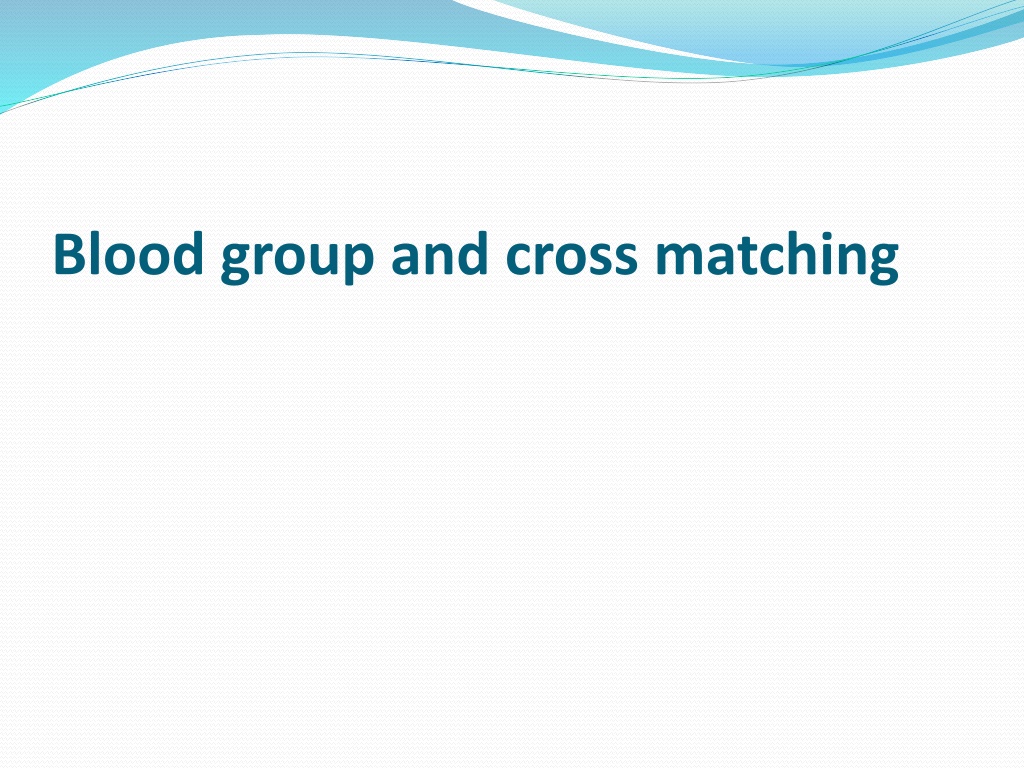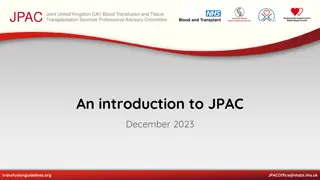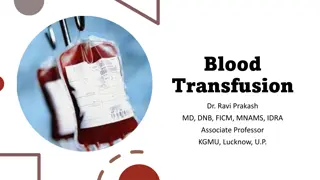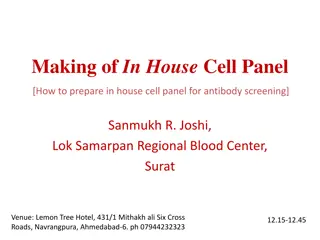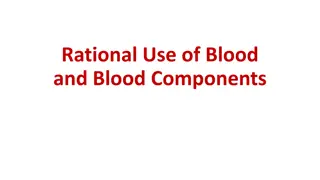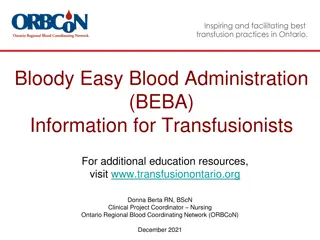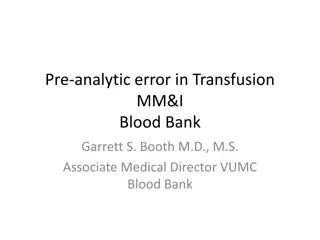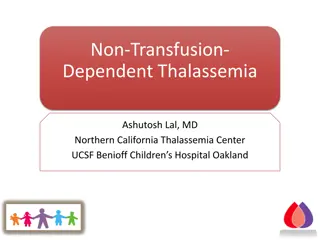Understanding Blood Group and Cross Matching in Transfusion Medicine
Blood group and cross matching play crucial roles in determining blood compatibility for transfusion. The presence or absence of specific antigens on red blood cells, along with antibody reactions, help identify blood types and ensure safe transfusions. Cross matching involves testing donor and recipient blood to prevent adverse reactions during transfusions. The Rh system, including the D antigen, further contributes to blood compatibility assessment. Understanding these concepts is vital for effective blood transfusion practices.
Download Presentation

Please find below an Image/Link to download the presentation.
The content on the website is provided AS IS for your information and personal use only. It may not be sold, licensed, or shared on other websites without obtaining consent from the author. Download presentation by click this link. If you encounter any issues during the download, it is possible that the publisher has removed the file from their server.
E N D
Presentation Transcript
Introduction and principle: The surface of the RBC contains numerous glycoprotein markers known as antigens (Ag). There are many different types of antigens, but the most common are the A, B, and D antigens (D is also known as the Rh factor). The presence or absence of these antigens determines the blood type of the individual. About six months after birth, the lymphocytes begin to produce certain antibodies (Ab), which are proteins that circulate in the blood plasma. These antibodies are isolated from the plasma and used as anti-sera in the laboratory to determine blood types. Mixing these anti-sera with whole blood stimulates a process called agglutination (clumping). For example, mixing anti-A serum with type A blood will cause the anti-A antibodies in the serum to "stick to" the A antigens on the erythrocytes. This Ag-Ab reaction will give the slide a beaded appearance (see figure below). Mixing anti-B serum with type A blood will NOT show agglutination. This is a negative test for the B antigen. Anti-A serum has been added to the blood drop in the left causing agglutination which gives the mixture a "beaded" appearance. When anti-B serum was added to the right drop, agglutination did not occur. For this particular sample of blood, this test indicates that the A antigen is present and the B antigen is not present; therefore this individual has type A blood.
Cross matching: it is a direct test of compatibility of donor's cells with recipient serum. In this test the donors RBC are mixed with the recipient serum on a slide. If agglutination occurs, this means that the donor's blood is incompatible with the recipient blood. Procedure: On a prepared a clean microscope slide with three circles drawn with wax pencil and labeled A, B and Rh (or D), place a small drop of blood in each circle (make sure you have enough blood, but do not completely fill the circle...).
Add anti-A serum to the circle labeled A, anti-B serum to the circle labeled B, and anti-D serum (or Anti-Rh) to the circle labeled D. Mix the contents of each circle with a clean toothpick (Figure below). The reaction will appear in 20-60 sec.
Check for agglutination by naked eye or by microscope and the test should be performed in a warm room temperature to prevent the action of cold agglutinins which lead to confusion. Place your slide on a white piece of paper to better view the agglutination process. What is your blood type?
Rh system: there are 6 common types of Rh antigens these are C, D, E, c, d, e. The most common is the D antigen. Anybody has D agglutinogens is Rh positive. And the antibodies to the Rh antigen do not occur naturally but can occur after blood transfusion and during pregnancy. The percentages of people who are Rh + veare 75% - 85%
Medical considerations Hemolytic disease of the newborn which occurs in cases of Rh -ve mother and Rh +ve fetus. It is due to the attack on fetal RBCs by maternal antibodies which can pass across the placenta. It seldom affects the first pregnancy unless the mother is previously sensitized by previous exposure to Rh +ve blood due to blood transfusion, abortion, placental abnormality during her current pregnancy. Notes: The person who is of a blood group AB is called universal recipient The person of blood group O is called universal donor
